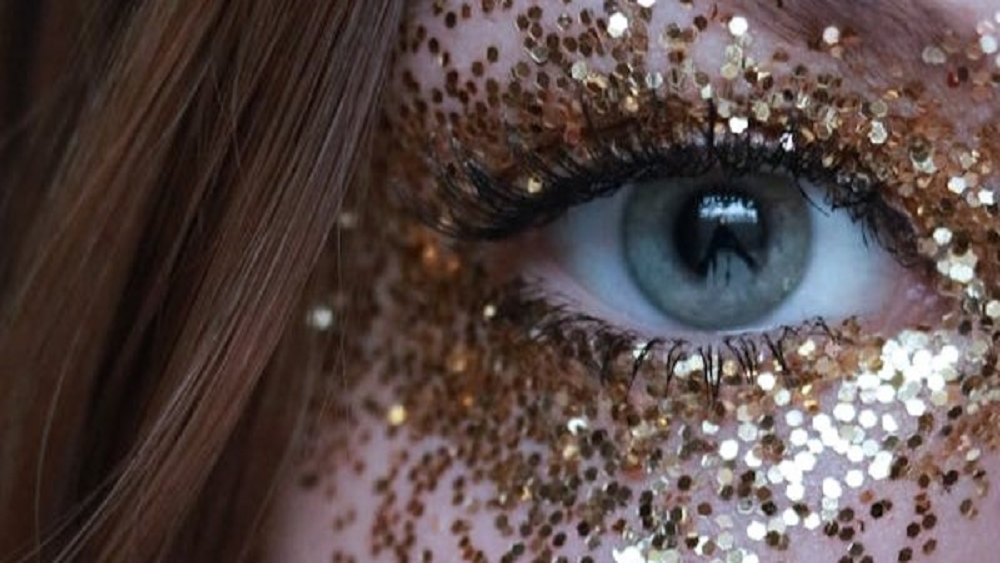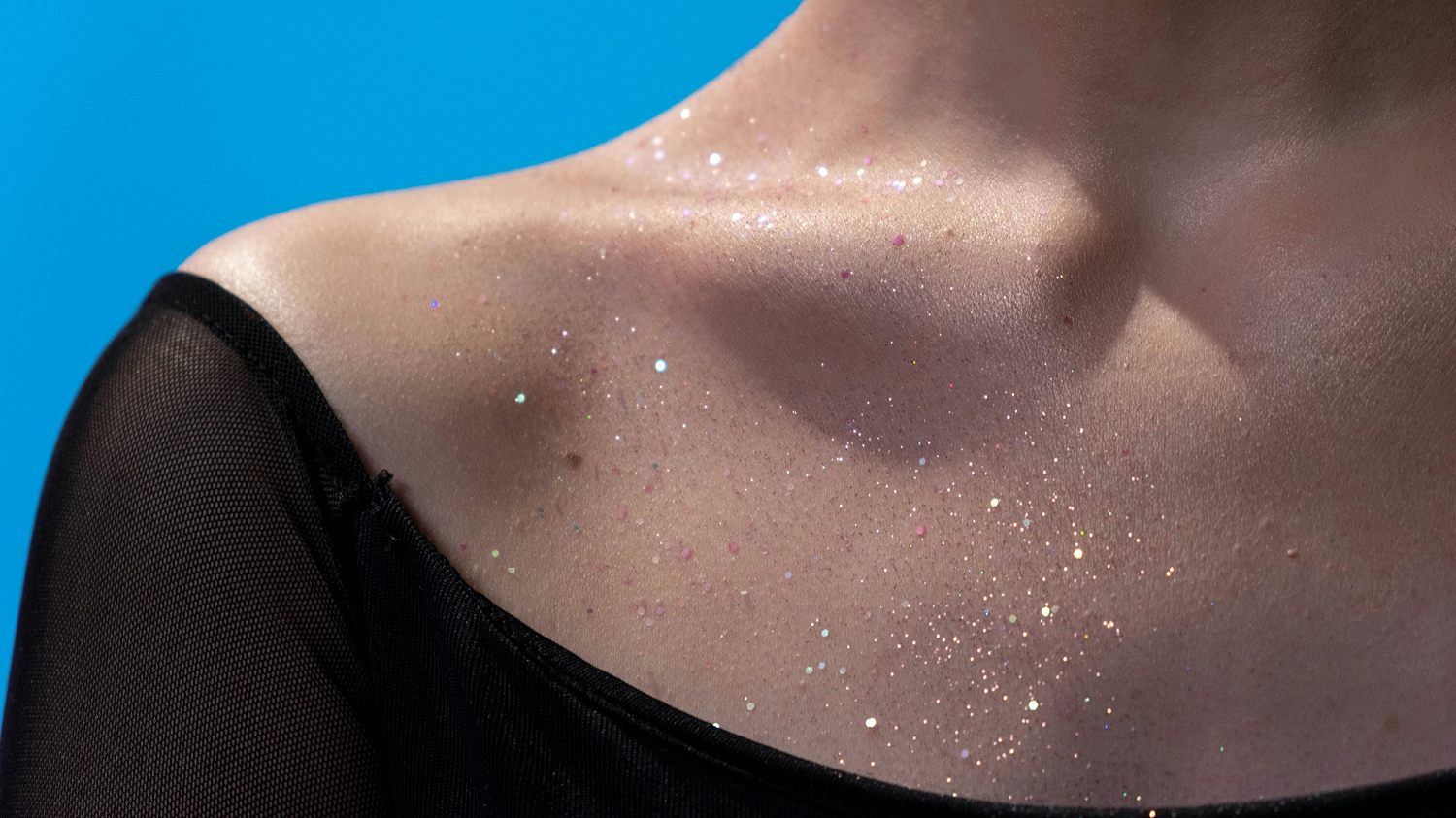December brings lights, warmth, and sparkle, as everything around us shines a little brighter. Not only are the decorations around us sparkling, but we are also adorning ourselves with a bit more shine. But have you ever wondered what gives the glitter we put on our skin its dazzling brilliance? And more importantly, do we really need it?

Source: pexels.com
In recent years, the cosmetics industry has faced growing scrutiny over its use of microplastics, especially microbeads—tiny spherical plastic particles once popular in face scrubs and cleansers [1]. These small and water-insoluble plastics easily made their way into rivers and oceans, where they don’t degrade and can absorb harmful chemicals. This led the EU to ban microbeads, sparking a much-needed conversation about sustainability and the environmental impact of beauty products.
What about the glitter? Are those shiny little particles also microplastics?
Glitter is a material that is very popular among people because it evokes mostly positive emotions like joy, festivity, and it is a symbol of beauty and glamour. We can find glitter particles in a variety of consumer products, including clothes, shoes, cosmetics, art or craft supplies and even home decorations. But glitter isn’t just magic dust! It is usually made from tiny plastic pieces (like PET or PVC) coated with metals such as aluminium and additionally coloured to make them so shiny. It comes in many colours, shapes, and sizes, but because it’s smaller than 5 mm, glitter is considered a type of microplastics [2].
While they make you look fabulous, they also come with a major downside: they don’t go away. Yikes, right?
Like microbeads, glitter accumulates in the environment. However, glitter is often smaller, has a more complex composition, and is used decoratively in products like makeup and nail polish, unlike the functional use of microbeads in scrubs [3, 4].
Youth love using glitter in their decorative cosmetics because it adds an extra touch of sparkle and excitement to their look, especially for special occasions like parties, festivals, and celebrations. Ever wonder where glitter goes after the party’s over? It sticks to your skin, gets washed off, and heads straight down the drain. Wastewater treatment plants can’t filter it out, so it ends up in rivers and oceans. Scientists have even found glitter particles in fish and marine ecosystems. Moreover, glitter is often used just once for these events, so it can quickly become a waste [2, 3]!
Is glitter also banned like microbeads? No, glitter isn’t fully banned like microbeads. Some plastic glitter, like loose glitter or the glitter that can be easily removed from the article, and are primarily meant for decoration, is restricted, but certain types are still allowed. However, plastic glitter will be banned after the transition period; in rinse-off cosmetics by 2027, in leave-on products by 2029, and in makeup or nail products by 2035 [5].
Huh, it was already late yesterday, but better late than never, right?

Source: pexels.com
GG tip: As consumers, we can drive change! Being friendly to the environment doesn’t mean giving up the glam. To shine responsibly, you can:
- Look for biodegradable glitter made from plant-based materials, which breaks down naturally.
- Check labels and avoid products with plastic ingredients. There are some mobile apps that can help you recognize these ingredients – check our GreenScan app.🙂
- DIY your shine using natural options like mica powders or mineral-based highlighters.
- Support sustainable brands: Many companies now offer eco-friendly makeup and accessories.
Let’s move plastics away from our make-up.
You can read more about the cosmetic microplastics, glitter and microbead ban in the G-Book 2 … coming soon😊
Sources:
[1] Beat the Microbead, Plastic Soup Foundation (December 2024): https://www.beatthemicrobead.org/microplastics-vs-microbeads/
[2] Tagg AS, Ivar do Sul JA. Is this your glitter? An overlooked but potentially environmentally-valuable microplastic. Mar Pollut Bull. 2019 Sep;146:50-53. doi: 10.1016/j.marpolbul.2019.05.068. Epub 2019 Jun 5. PMID: 31426186.
[3] Boots B, Green DS, Olah-Kovacs B, De Falco F, Lupo E. Physical and chemical effects of conventional microplastic glitter versus alternative glitter particles on a freshwater plant (Lemnaceae: Lemna minor). Ecotoxicol Environ Saf. 2023 Sep 15;263:115291. doi: 10.1016/j.ecoenv.2023.115291. Epub 2023 Jul 24. PMID: 37494737.
[4] Provenza F, Anselmi S, Specchiulli A, Piccardo M, Barceló D, Prearo M, Pastorino P, Renzi M. Sparkling plastic: Effects of exposure to glitter on the Mediterranean mussel Mytilus galloprovincialis. Environ Toxicol Pharmacol. 2022 Nov;96:103994. doi: 10.1016/j.etap.2022.103994. Epub 2022 Sep 30. PMID: 36183968.
[5] Commission Regulation (EU) 2023/2055 of 25 September 2023 amending Annex XVII to Regulation (EC) No 1907/2006 of the European Parliament and of the Council concerning the Registration, Evaluation, Authorisation and Restriction of Chemicals (REACH) as regards synthetic polymer microparticles: https://eur-lex.europa.eu/eli/reg/2023/2055/oj


0 Comments